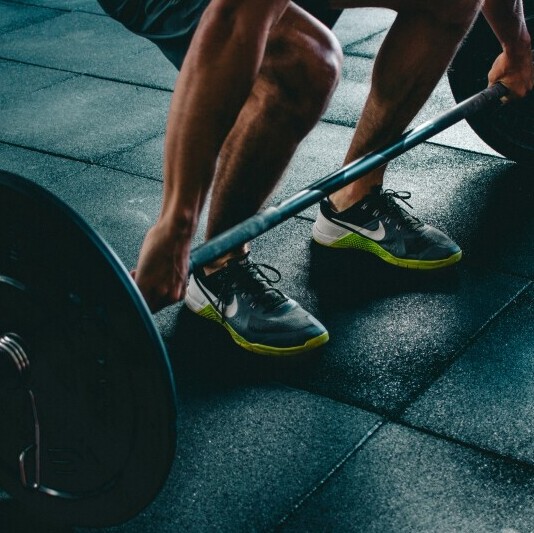Every athlete knows it’s not just about raw power or speed. It’s about having the right tools to perform and stay in the game. Imagine an athlete as a carpenter; both need specific tools for the job. In the world of fitness, these tools are the fundamental exercises that build strength, prevent injuries, and boost your overall game.

The foundation of any effective athletic program rests on core exercises that touch on every essential movement pattern in the body. Sounds technical, right? But it’s really just about fitting in exercises that give you major benefits without needing a ton of equipment or time. These are the building blocks that set the stage for anything more complex you aim to achieve.
From boosting performance across multiple planes to shoring up those core muscles, it’s these exercises that help keep you on the field, in the game, or wherever you’re pushing your limits. I’m gonna walk you through why they matter, how they work, and what they can do for you, whether you’re just starting out or you’re deep into your athletic journey.
The Big Five Exercises: Creating the Perfect Balance
Let’s face it, when it comes to working out, not all exercises are created equal. We’re talking about a select few that offer maximum bang for your fitness buck—these are the Big Five exercises every serious athlete should embrace. They hit all the right muscles, from your core to your limbs, ensuring you’re not just strong, but well-rounded and resilient.
- What makes these exercises so special? First off, they’re pillars of injury prevention, making sure your muscles and joints stay in harmony, reducing the risk of overuse injuries. Each movement is designed to create balance and stability across your body.
- When it comes to athletic performance, you want exercises that work across multiple planes—think about movements that aren’t just up and down but use your entire body in sync. These five target essential muscle groups, ensuring you’re ready for anything, whether it’s a vertical leap, a sprint, or even hoisting that trophy overhead.
- Part of their appeal is efficiency. You’ve got a busy schedule, and these exercises deliver serious results without needing a gym full of fancy gear. With limited time, these moves bring high return, allowing you to focus on quality rather than quantity.
- And let’s not forget the foundation they provide. These exercises set the groundwork for more advanced skills and routines, meaning when it comes time to tackle more complex lifts or movements, you’re not just winging it—you’ve laid the groundwork to do it right and safely.
The Vertical Lower Body Push: Barbell Front Squat
When we talk about building strong legs, the barbell front squat takes center stage. It’s a powerhouse of an exercise that doesn’t just crank up your leg strength but also your overall stability. With the focus on an upright posture, you’re not only boosting muscle but protecting your lower back from unnecessary strain—a win-win in any athlete’s book.
This squat variation comes with its perks in the world of sports. Whether you aim for higher jumps, more agility, or greater leg power, this one movement can set the tone. It’s all about activating those muscle fibers at a higher rate across your lower body and core, which translates into explosive power where it counts.
Plus, that full-depth squat action? It’s like giving your body a cheat sheet for optimal movement—training flexibility while enforcing good form. And, truth be told, mastering it isn’t just about getting the form right. It becomes a challenge of coordination and control, all while handling weight that demands respect.
So next time you load up the bar, remember that every rep with the barbell front squat is a step toward a more robust and capable athletic performance. It’s not just a squat; it’s a foundational movement pushing your limits and uplifting your game.
Upper Body Mastery: Pull-ups and Overhead Press
When it comes to upper body workouts that pack a punch, pull-ups and the overhead press are absolute game-changers. These exercises are more than just about building muscle—they’re about building unmatched strength and stability from the shoulders down.
- Let’s talk pull-ups first. They’re not just any pulling exercise; they’re the benchmark for upper body pulling strength. By targeting your lats, rhomboids, and biceps, pull-ups boost your ability to handle your body weight with precision, essential for sports that involve grappling or overhead movements.
- The barbell overhead press, on the other hand, is all about power and endurance in the shoulders, traps, and triceps. It’s like the ultimate test for core engagement and stability. From here, you’re setting the stage for advanced overhead lifts, seamlessly connecting your upper and lower body into a unified force.
- Together, these exercises ensure a balanced approach, so your upper body’s not just muscular but also tuned for high performance. Whether you’re after raw strength or a refined physique, combining pull-ups and the overhead press gets you there with efficiency and style.
- Getting comfortable with these movements might take time, but they lay down the groundwork for tackling more complex exercises down the road. It’s about mastering control, enhancing flexibility, and, ultimately, taking your athletic capability to new heights.
Core Stability is Key: Plank with Alternating Arm/Leg Raises
- Strength starts at the core, and if you’re aiming for peak athletic performance, incorporating plank variations is a must. Specifically, the plank with alternating arm and leg raises is a standout when it comes to core stability.
- This exercise isn’t your average plank. It engages the anterior, lateral, and posterior core muscles, ensuring your entire midsection is locked and loaded for whatever challenge comes its way. By lifting opposite limbs, you crank up the difficulty, bringing anti-rotation elements into play—this builds the cross-body coordination crucial in sports.
- Why is this important? Because every sport, in some way, depends on your ability to maintain form and balance under pressure. Whether you’re pivoting, swinging, or sprinting, strong core stability enhances your agility and efficiency.
- This plank variation also safeguards your spine, fortifying a solid base that supports compound lifts and complex motions. It’s like a safety net, conditioning you against common sports injuries while improving overall movement mechanics.
- Time invested in this plank is time well spent—a few minutes can bring about significant changes. Whether you’re grounding your performance in sports or everyday life, having a strong, stable core is non-negotiable.
- Master this move, and you’ll see how foundational strength isn’t just about the big muscles. It’s about those smaller stabilizers and connectors that keep everything running smoothly.
Send a comment if there is anything that you want to know about this topic, i am available an will answer when i have the time to do so.

